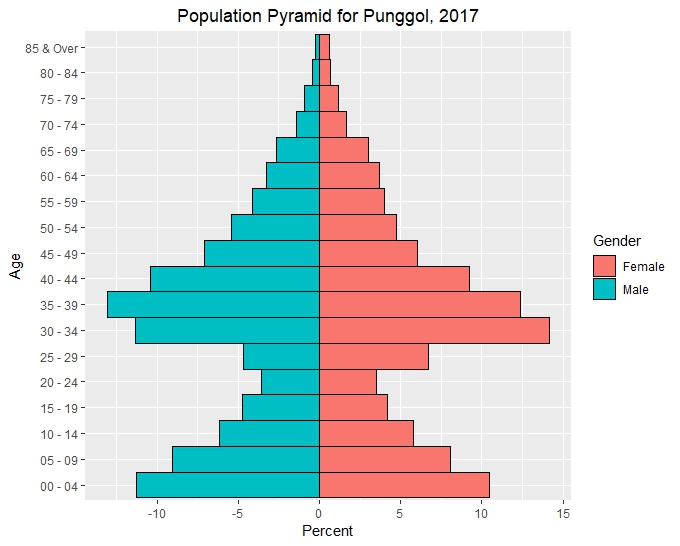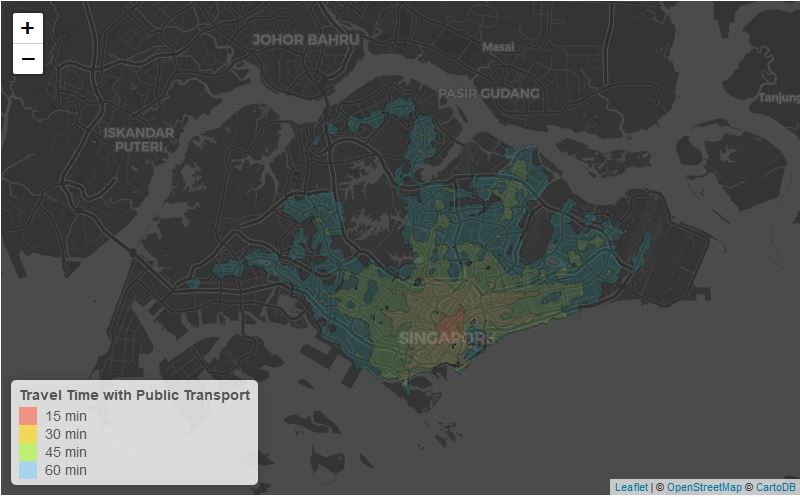Multi-label Classification with scikit-multilearn
1. Introduction
We typically group supervised machine learning problems into classification and regression problems. Within the classification problems sometimes, multiclass classification models are encountered where the classification is not binary but we have to assign a class from choices.
In multi-label classification, instead of one target variable , we have multiple target variables , , …, . For example there can be multiple objects in an image and we need to correctly classify them all or we are attempting predict which combination of a product that a customer would buy.
Certain decision tree based algorithms in Scikit-Learn are naturally able to handle multi-label classification. In this post we explore the scikit-multilearn library which leverages Scikit-Learn and is built specifically for multi-label problems.
2. Datasets
We use the MediaMill dataset to explore different multi-label algorithms available in Scikit-Multilearn. Our goal is not to optimize classifier performance but to explore the various algorithms applicable to multi-label classification problems. The dataset is reasonable with over 30k train points and 12k test points. There are 120 features and 101 labels.
This dataset was chosen in order to work with a fairly large dataset to illustrate difficulties in multi-label classification instead of a toy example. In particular when there are labels, the search space increases exponentially to . A list of multi-label datasets can be found at Manik Varma’s Extreme Classification Repository. The data is provided in sparse format and the authors only provide Matlab scripts to convert them; some data wrangling is needed in python to handle them.
from scipy import sparse
import gc
f = open(r'C:\Users\david\Downloads\Mediamill\Mediamill_data.txt',
'r',encoding='utf-8')
#f = open(r'C:\Users\kaoyuant\Downloads\Mediamill\Mediamill_data.txt',
# 'r',encoding='utf-8')
size = f.readline()
nrows, nfeature,nlabel = [int(s) for s in size.split()]
x_m = [[] for i in range(nrows)]
pos = [[] for i in range(nrows)]
y_m = [[] for i in range(nrows)]
for i in range(nrows):
line = f.readline()
temp=[s for s in line.split(sep=' ')]
pos[i]=[int(s.split(':')[0]) for s in temp[1:]]
x_m[i]=[float(s.split(':')[1]) for s in temp[1:]]
for s in temp[0].split(','):
try:
int(s)
y_m[i]=[ int(s) for s in temp[0].split(',')]
except:
y_m[i]=[]
f = open(r'C:\Users\david\Downloads\Mediamill\Mediamill_trSplit.txt',
'r',encoding='utf-8')
#f = open(r'C:\Users\kaoyuant\Downloads\Mediamill\Mediamill_trSplit.txt',
# 'r',encoding='utf-8')
train=f.readlines()
f = open(r'C:\Users\david\Downloads\Mediamill\Mediamill_tstSplit.txt',
'r',encoding='utf-8')
#f = open(r'C:\Users\kaoyuant\Downloads\Mediamill\Mediamill_tstSplit.txt',
# 'r',encoding='utf-8')
test=f.readlines()
select=0
train_=[int(s.split()[select])-1 for s in train]
test_=[int(s.split()[select])-1 for s in test]
xm_train=[x_m[i] for i in train_]
ym_train=[y_m[i] for i in train_]
xm_test=[x_m[i] for i in test_]
ym_test=[y_m[i] for i in test_]
x_train=sparse.lil_matrix((len(train_),nfeature))
for i in range(len(train_)):
for j in range(len(pos[i])):
x_train[i,pos[i][j]]=xm_train[i][j]
x_test=sparse.lil_matrix((len(test_),nfeature))
for i in range(len(test_)):
for j in range(len(pos[i])):
x_test[i,pos[i][j]]=xm_test[i][j]
del x_m, xm_train, pos,xm_test
gc.collect()
y_train=sparse.lil_matrix((len(train_),nlabel))
for i in range(len(train_)):
for j in ym_train[i]:
y_train[i,j]=1
y_test=sparse.lil_matrix((len(test_),nlabel))
for i in range(len(test_)):
for j in ym_test[i]:
y_test[i,j]=1
del y_m, ym_train, ym_test
gc.collect()
3. Label Graph
When the label space is large, we can try to explore it using graph methods. Each label is a node in the graph and an edge exists when labels co-occur, weighted by the frequency of co-occurrence.
from skmultilearn.cluster import LabelCooccurrenceGraphBuilder
graph_builder = LabelCooccurrenceGraphBuilder(weighted=True,
include_self_edges=False)
label_names=[i for i in range(nlabel)]
edge_map = graph_builder.transform(y_train)
print("{} labels, {} edges".format(len(label_names), len(edge_map)))
101 labels, 2213 edges
Once we have constructed the label graph, we can apply graph algorithms on it to explore and understand it.
One possibility is to cluster similar labels together so that they are processed together by the multilabel classification algorithms. Community detection methods such as the Louvain algorithm allow us to cluster the label graph. This is implemented in the NetworkXLabelGraphClusterer with the parameter methods = louvain.
from skmultilearn.cluster import NetworkXLabelGraphClusterer
# we define a helper function for visualization purposes
def to_membership_vector(partition):
return {
member : partition_id
for partition_id, members in enumerate(partition)
for member in members
}
clusterer = NetworkXLabelGraphClusterer(graph_builder, method='louvain')
partition = clusterer.fit_predict(x_train,y_train)
membership_vector = to_membership_vector(partition)
print('There are', len(partition),'clusters')
There are 3 clusters
Our graph can be visualized with NetworkX. We use the force or spring layout for better visibility.
import networkx as nx
names_dict = dict(enumerate(x for x in label_names))
import matplotlib.pyplot as plt
%matplotlib inline
nx.draw(
clusterer.graph_,
pos=nx.spring_layout(clusterer.graph_,k=4),
labels=names_dict,
with_labels = True,
width = [10*x/y_train.shape[0] for x in clusterer.weights_['weight']],
node_color = [membership_vector[i] for i in range(y_train.shape[1])],
cmap=plt.cm.viridis,
node_size=250,
font_size=10,
font_color='white',
alpha=0.8
)

We get 3 clusters. It might make sense to group them together when we send them to the multilabel algorithm. Certain labels have lower centrality, indicating less influence from other labels. It is possible to predict these labels first before predicting the more central labels when using the chained classifier algorithm (see below).
4. Metric
Before going into the details of each multilabel classification method, we select a metric to gauge how well the algorithm is performing. Similar to a classification problem it is possible to use Hamming Loss, Accuracy, Precision, Jaccard Similarity, Recall, and F1 Score. These are available from Scikit-Learn.
Going forward we’ll chose the F1 Score as it averages both Precision and Recall as well as the Hamming Loss. For the F1 score, we set the parameter average = micro to calculate metrics globally. There are many labels and some labels are not predicted; using average = weighted will result in the score for certain labels to be set to 0 before averaging.
It is also helpful to plot the confusion matrix to understand how the classifier is performing, but in our case there are too many labels to visualize.
5. Multilabel Classifiers - Algorithm Adaptation
Algorithm Adaptation, as indicated by it’s name, extend single label classification to the multi-label context, usually by changing the cost or decision functions.
5a. Algorithm Adaptation - MLkNN
Multi-label K Nearest Neighbours uses k-Nearest Neighbors to find nearest examples to a test class and uses Bayesian inference to predict labels. This is a distance based method and works well when there is a relationship between distance and labels. Parameters k and s need to be determined. This can be done using the GridSearchCV function from sklearn.
from skmultilearn.adapt import MLkNN
from sklearn.model_selection import GridSearchCV
import time
parameters = {'k': range(1,3), 's': [0.5, 0.7, 1.0]}
score = 'f1_micro'
start=time.time()
classifier = GridSearchCV(MLkNN(), parameters, scoring=score)
classifier.fit(x_train, y_train)
print('training time taken: ',round(time.time()-start,0),'seconds')
print('best parameters :', classifier.best_params_, 'best score: ',
clf.best_score_)
training time taken: 15720.0 seconds
print('best parameters :', classifier.best_params_,
'best score: ',classifier.best_score_)
best parameters : {'k': 1, 's': 0.5} best score: 0.5946738355601814
5b. Algorithm Adaptation - BRkNNaClassifier
Short hand for Binary Relevance k-Nearest Neighbours. A k-Nearest Neighbour is trained per label. This requires a lot of compute for a large label space.
from skmultilearn.adapt import BRkNNaClassifier
parameters = {'k': range(3,5)}
score = 'f1_micro'
start=time.time()
classifier = GridSearchCV(BRkNNaClassifier(), parameters, scoring=score)
classifier.fit(x_train, y_train)
print('training time taken: ',round(time.time()-start,0),'seconds')
print('best parameters :', classifier.best_params_,
'best score: ',classifier.best_score_)
training time taken: 1572.0 seconds
best parameters : {'k': 3} best score: 0.6020060621186349
6. Multilabel Classifiers - Problem Transformation
6a. Problem Transformation : Binary Relevance
Binary relevance is simple; each target variable (, ,..,) is treated independently and we are reduced to classification problems. Scikit-Multilearn implements this for us, saving us the hassle of splitting the dataset and training each of them separately.
This classifier can generalize beyond labels present in the training set. However it is very slow if the label space is large.
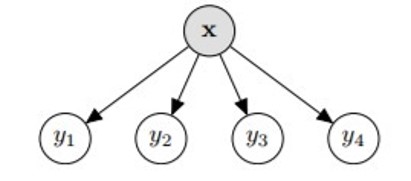
from skmultilearn.problem_transform import BinaryRelevance
from sklearn.ensemble import RandomForestClassifier
import time
start=time.time()
classifier = BinaryRelevance(
classifier = RandomForestClassifier(),
require_dense = [False, True]
)
classifier.fit(x_train, y_train)
print('training time taken: ',round(time.time()-start,0),'seconds')
training time taken: 606.0 seconds
start=time.time()
y_hat=classifier.predict(x_test)
print('prediction time taken: ',round(time.time()-start,0),'seconds')
prediction time taken: 42.0 seconds
import sklearn.metrics as metrics
br_f1=metrics.f1_score(y_test, y_hat, average='micro')
br_hamm=metrics.hamming_loss(y_test,y_hat)
print('Binary Relevance F1-score:',round(br_f1,3))
print('Binary Relevance Hamming Loss:',round(br_hamm,3))
Binary Relevance F1-score: 0.591
Binary Relevance Hamming Loss: 0.028
6b. Problem Transformation - Label Powerset
This method transforms the problem into a multiclass classification problem; the target variables (, ,..,) are combined and each combination is treated as a unique class. This method will produce many classes.
This transformation reduces the problem to only one classifier but, all possible labels need to be present in the training set.
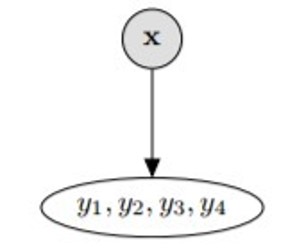
from skmultilearn.problem_transform import LabelPowerset
classifier = LabelPowerset(
classifier = RandomForestClassifier(),
require_dense = [False, True]
)
start=time.time()
classifier.fit(x_train, y_train)
print('training time taken: ',round(time.time()-start,0),'seconds')
training time taken: 625.0 seconds
start=time.time()
y_hat=classifier.predict(x_test)
print('prediction time taken: ',round(time.time()-start,0),'seconds')
prediction time taken: 134.0 seconds
lp_f1=metrics.f1_score(y_test, y_hat, average='micro')
lp_hamm=metrics.hamming_loss(y_test,y_hat)
print('Label Powerset F1-score:',round(lp_f1,3))
print('Label Powerset Hamming Loss:',round(lp_hamm,3))
Label Powerset F1-score: 0.582
Label Powerset Hamming Loss: 0.031
6c. Problem Transformation - Classifier Chains
Classifier chains are akin to binary relevance, however the target variables (, ,.., ) are not fully independent. The features (, ,.., ) are initially used to predict . Next (, ,.., , ) is used to predict . At the step, (, ,.., , ,.., ) predicts . The ordering in which the labels are predicted can be determined by the user and can greatly influence the results.
This classifier takes label dependencies into account and generalizes to label combinations not present in the training data. However the quality of the classifier is heavily dependent on the ordering; there are possible orderings and this method is slow if the label space is large.
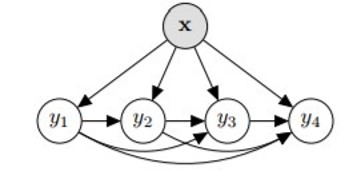
from skmultilearn.problem_transform import ClassifierChain
classifier = ClassifierChain(
classifier = RandomForestClassifier(),
require_dense = [False, True],
order=[i for i in range(nlabel)]
)
start=time.time()
classifier.fit(x_train,y_train)
print('training time taken: ',round(time.time()-start,0),'seconds')
training time taken: 549.0 seconds
start=time.time()
y_hat=classifier.predict(x_test)
print('prediction time taken: ',round(time.time()-start,0),'seconds')
prediction time taken: 12.0 seconds
cc_f1=metrics.f1_score(y_test, y_hat, average='micro')
cc_hamm=metrics.hamming_loss(y_test,y_hat)
print('Classifier Chain F1-score:',round(cc_f1,3))
print('Classifier Chain Hamming Loss:',round(cc_hamm,3))
Classifier Chain F1-score: 0.591
Classifier Chain Hamming Loss: 0.028
Based on our construction of the label space Graph, we try to order the labels by increasing betweenness centrality; poorly connected labels will first be trained and then used to classify other labels.
from operator import itemgetter
sorted_deg = [s[0] for s in sorted(nx.betweenness_centrality(clusterer.graph_).items(),
key=itemgetter(1))]
classifier = ClassifierChain(
classifier = RandomForestClassifier(),
require_dense = [False, True],
order=sorted_deg
)
start=time.time()
classifier.fit(x_train,y_train)
print('training time taken: ',round(time.time()-start,0),'seconds')
training time taken: 581.0 seconds
start=time.time()
y_hat=classifier.predict(x_test)
print('prediction time taken: ',round(time.time()-start,0),'seconds')
prediction time taken: 12.0 seconds
cco_f1=metrics.f1_score(y_test, y_hat, average='micro')
cco_hamm=metrics.hamming_loss(y_test,y_hat)
print('Classifier Chain Ordered F1-score:',round(cco_f1,3))
print('Classifier Chain Ordered Hamming Loss:',round(cco_hamm,3))
Classifier Chain Ordered F1-score: 0.018
Classifier Chain Ordered Hamming Loss: 0.063
Classifying by increasing betweenness centrality produces very poor results as seen above. If we were to order the chain by decreasing betweenness centrality we still get poor results.
rev_sorted_deg = [s[0] for s in sorted(nx.betweenness_centrality(clusterer.graph_).items(),
key=itemgetter(1),
reverse=True)]
classifier = ClassifierChain(
classifier = RandomForestClassifier(),
require_dense = [False, True],
order=rev_sorted_deg
)
start=time.time()
classifier.fit(x_train,y_train)
print('training time taken: ',round(time.time()-start,0),'seconds')
training time taken: 456.0 seconds
start=time.time()
y_hat=classifier.predict(x_test)
print('prediction time taken: ',round(time.time()-start,0),'seconds')
prediction time taken: 10.0 seconds
ccr_f1=metrics.f1_score(y_test, y_hat, average='micro')
ccr_hamm=metrics.hamming_loss(y_test,y_hat)
print('Classifier Chain Reverse Ordered F1-score:',round(ccr_f1,3))
print('Classifier Chain Reverse Ordered Hamming Loss:',round(ccr_hamm,3))
Classifier Chain Reverse Ordered F1-score: 0.011
Classifier Chain Reverse Ordered Hamming Loss: 0.068
These results illustrate the dependence on the order of the labels. Unfortunately we did not get the improvement hoped for by using the ordering derived from the label graph.
7. Multilabel Classifiers - Ensembles of Classifiers
This class uses ensemble learning with the base classifier being a multi-label classifier.
7a. Ensembles of Classifiers - LabelSpacePartitioningClassifier
The label space is partitioned into separate sub label spaces, for example by constructing a label graph and applying a graph clustering/community detection algorithm like we did in section 3. A base multi-label subclassifier is trained on each subspace. The result is predicted with each of the subclassifies and we take the sum
This method adapts the classifiers according to the label space and requires less classifiers than binary relevance. On the downside, the label combination has to be present in the training dataset in order to be predicted and partitioning might prevent correct classification of certain label combinations.
from skmultilearn.ensemble import LabelSpacePartitioningClassifier
classifier = LabelSpacePartitioningClassifier(
classifier = BinaryRelevance(
classifier = RandomForestClassifier(),
require_dense = [False, True]
),
clusterer = NetworkXLabelGraphClusterer(graph_builder, method='louvain')
)
start=time.time()
classifier.fit(x_train,y_train)
print('training time taken: ',round(time.time()-start,0),'seconds')
training time taken: 612.0 seconds
start=time.time()
y_hat=classifier.predict(x_test)
print('prediction time taken: ',round(time.time()-start,0),'seconds')
prediction time taken: 5.0 seconds
part_f1=metrics.f1_score(y_test, y_hat, average='micro')
part_hamm=metrics.hamming_loss(y_test,y_hat)
print('Label Space Partitioning Classifier F1-score:',round(part_f1,3))
print('Label Space Partitioning Classifier Hamming Loss:',round(part_hamm,3))
Label Space Partitioning Classifier F1-score: 0.591
Label Space Partitioning Classifier Hamming Loss: 0.028
7b. Ensembles of Classifiers - Majority Voting Classifier
This is similar to the Label Space Partitioning Classifier but the majority vote is used instead.
from skmultilearn.ensemble import MajorityVotingClassifier
classifier = LabelSpacePartitioningClassifier(
classifier = BinaryRelevance(
classifier = RandomForestClassifier(),
require_dense = [False, True]
),
clusterer = NetworkXLabelGraphClusterer(graph_builder, method='louvain')
)
start=time.time()
classifier.fit(x_train,y_train)
print('training time taken: ',round(time.time()-start,0),'seconds')
training time taken: 621.0 seconds
start=time.time()
y_hat=classifier.predict(x_test)
print('prediction time taken: ',round(time.time()-start,0),'seconds')
prediction time taken: 5.0 seconds
majo_f1=metrics.f1_score(y_test, y_hat, average='micro')
majo_hamm=metrics.hamming_loss(y_test,y_hat)
print('Majority Voting Classifier F1-score:',round(majo_f1,3))
print('Majority Voting Classifier Hamming Loss:',round(majo_hamm,3))
Majority Voting Classifier F1-score: 0.591
Majority Voting Classifier Hamming Loss: 0.028
8. Conclusion
Multi-label classification methods allow us to classify data sets with more than 1 target variable and is an area of active research. There are various methods which should be used depending on the dataset on hand. A variety of base classifiers can be chosen; Random Forest was used for simplicity and to minimize calculation time.
The MediaMill dataset is among the smallest in the Extreme Classification Repository. The methods explored above would be far too slow if applied on datasets with label dimensionality of hundreds of thousands or millions. Datasets with a large number of possible labels require different approaches which will be explored in a separate post.


